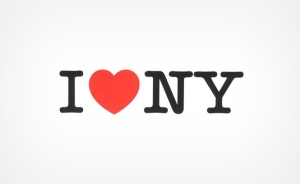Brand Audits Update x Christine Moody*
The business environment is constantly changing along with the idea of an organisation’s competitive advantage. Due to the rise of the power of the customer—mainly through social media platforms—more and more organisations are realising that becoming ‘customer-centric’ is an imperative in order to create a point of difference and survive. Innovative organisations are creating executive roles for designers to ensure that the customer-centric focus is culturally embedded in the organisation rather than an ‘add on’ that comes with contracted designers who perform tasks around a particular project. Being customer centric means putting the customer in the centre of the organisation to view the organisation from their point of view. It leads to recognisiing their ‘pain points’ and improving their contact with the organisation but also leads to revealing potential innovative products and services.
Innovative organisations are creating executive roles for designers to ensure that the customer-centric focus is culturally embedded in the organisation…
Here are some articles on companies that recognise the importance of designers being part of the team.
Fast Company
“Product design is historically a male-dominated field, but today it’s brimming with talented and ambitious women. In the coming months I’ll be profiling 21st-century women like me who have built—or are building—careers in the design industry. I’ll share their stories about how they are evolving design practice through their unique perspectives on art, culture, technology, and business. I saw how MBA students would tackle problems a designer could tackle, but in a different way.”
Design Council (UK)
“Design is everything, because without it we have no business. Anybody can design a decent product. They can’t all design outstanding products. So, design is the differentiator. CEO, Pentland Brands plc (owners of Speedo)”
Better By Design (NZ)
“A simple observation ‘the closer we get to nature, the less likely we are to find people wearing something natural’ was behind the creation of Icebreaker’s outdoor clothing. This simple observation was behind the creation of the first truly new category in outdoor clothing in the past decade. Jeremy Moon, founder and CEO of Wellington-based Icebreaker Nature Clothing realised the opportunity presented by this paradox when he first saw finely woven merino wool. “It felt like nothing I’d ever touched—silky soft, warm and natural yet it could be thrown in the washing machine.”
*Christine Moody is one of Australia’s leading brand strategists and the founder brand management consultancy, Brand Audits. With more than 30 years’ professional experience, Christine has helped a diverse client base of local and international brands, including Gold Coast City Council, Hilton Hotels, and Wrigleys USA, to develop, protect and achieve brand differentiation.










